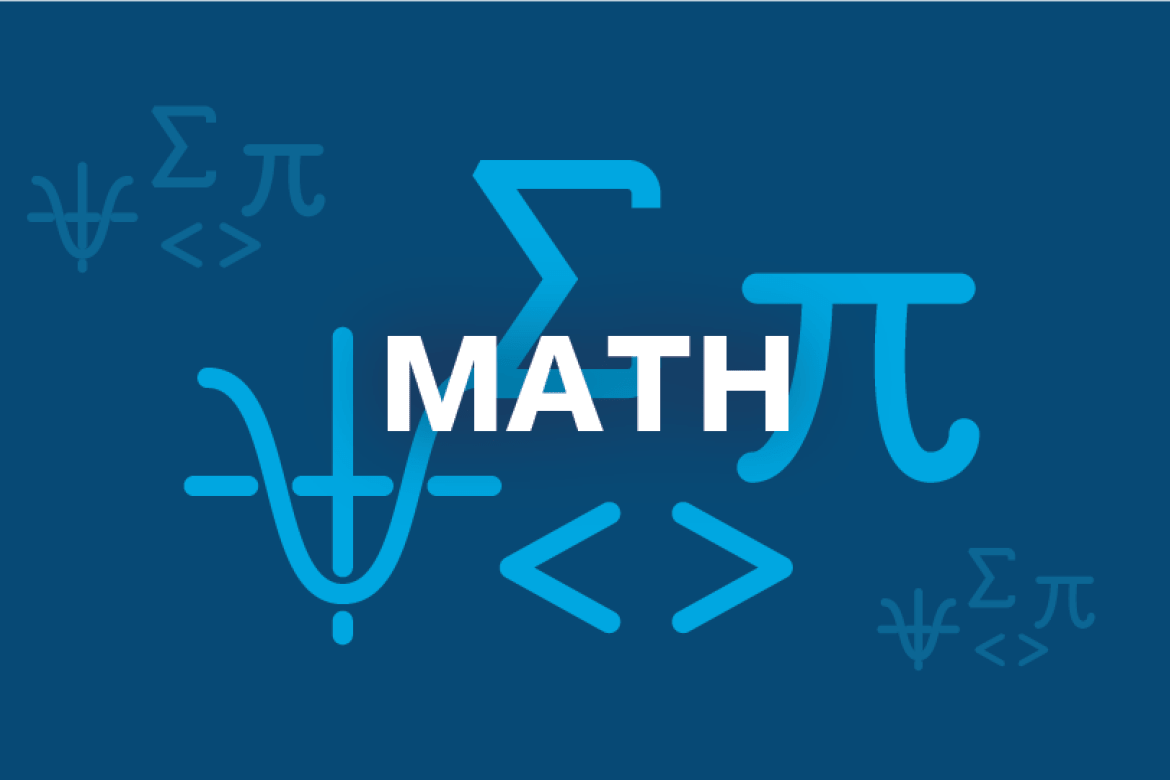Spotlight on popular majors: Mathematics

Mathematics is more than just a universal language. It’s a doorway that leads to a plethora of career paths.
Want to follow the trail blazed by NASA astronaut Kalpana Chawla? Have an idea for the next clean energy product that can land you on the cover of Fortune magazine? Perhaps you’ve always wanted to run with the bulls — on Wall Street, that is. Mathematics offers a gateway to these careers and more.
"Mathematics is a popular choice for students because it keeps doors open,” says Margaret Robinson, department chair. “If you major in mathematics or statistics, you can do more or less anything after graduation.”
As a math major at Mount Holyoke, you learn the essential skills of problem solving — to think, speak and write with precision. You conduct experiments that produce illuminating examples and raise further questions that require answering, discover how to recognize patterns and make conjectures based on observations, and learn how to support those conjectures with arguments based on empirical evidence, mathematical and statistical analysis, and mathematical proofs.
Along with the flexibility to pursue a wide variety of career paths and postgraduate degrees, you will gain a close-knit community of faculty and students.
“I hate to sound cliche, but there truly is a collective energy in the department that is warm and inviting,” says Chassidy Bozeman, Clare Boothe Luce Assistant Professor of Mathematics. “And it is genuine, rather than performative. I think the students can feel this too.” With a specialization in graph theory and linear algebra, Bozeman is one of the first three African Americans to be awarded a doctorate in mathematics from Iowa State University.
Weekly gatherings run by the department foster that sense of community. As a student you can join faculty and other students to hear outside speakers and speakers from the College, as well as socialize.
“Our weekly seminar exposes students to more advanced topics in mathematics and statistics and to a wide range of mathematicians, statisticians and data scientists at different institutions and businesses, including many who are alums,” says Robinson.
The mathematics community extends beyond your classes. Maybe you will train with faculty to become a paid teaching assistant or grader. Or, you might join a weekly discussion group that focuses on specific mathematical topics, such as problem solving, modeling and actuarial exams.
As a mathematics major, you can join statistics majors at the Hudson River Undergraduate Mathematics Conference, where you will meet students studying math and related fields at colleges and universities from all over the northeast. Mount Holyoke was to host in 2020 but that was postponed until 2023. “Our students attend and often speak at the conference,” Robinson says.
All these opportunities offer visions of what you can do with your degree — and result in a significant number of students pursuing graduate degrees.
Not just mathematics — statistics and data science too
One of the advantages you gain from being a math major is that you share classes and professors with the statistics majors. The Department of Mathematics and Statistics also includes the data science major. While these are all separate majors, they are, of course, very related fields — your professors and fellow students are all tackling similar problems from different angles.
Working together in class, you get to know other students well and that may inspire you. You might take more courses with them. You may come in as a math major but then realize you really gravitate toward data science or statistics, both subjects that build and strengthen your coding skills.
No matter what you ultimately major in, you learn to solve problems. You build critical thinking skills and reasoning power and you learn to think, speak and write with precision. In every case, your classes are interactive, engaging and connected to world events.
“Mathematics, statistics and data science are areas that are in high demand due to their applicability throughout the world,” says Bozeman. “This demand draws a large number of students to our department. As a department we put a significant amount of thought into our teaching. We want students to understand that we care more about their learning than their grade.”
The department is very supportive of exposing students to the larger mathematical and statistical world, Robinson says. “Whether through our weekly talks, independent studies, research courses and more, we want our students to discover mathematics and statistics. We want them to do mathematics and statistics rather than just learn it.”
Stats about math
As of February 2021:
- 68 students are mathematics majors, of which 32 are double majors
- 21 minors
- 12.3 faculty
One or two students graduate with honors in mathematics each year. Thesis topics include:
- The prime is P algorithm and primality testing
- Using algebra to detect flexible positions of body and bar frameworks in the plane
- A comparison of methods to quantify homophily
- Problems motivated by cryptology: Counting fixed points and two-cycles of the discrete Lambert map
- An exploration of algebraic approaches to graph theory
- The Galois Group of 8-Torsion Points on Elliptic Curves
- On index divisibility in the orbit of zero generated by polynomial iteration
- Counting three-cycles of the discrete exponential function and other problems using p-adic analysis
- Bayesian Variable Selection for Post-analytic Interrogation of Susceptibility Loci
- Mathematical Models of Tuberculosis Transmission
- Applications of Empirical Potentials and Pathway Combinations to Extending Perovskite Simulations
These results are from Mount Holyoke’s annual Alum Survey:
- 90% of respondents satisfied with their careers thus far
- 80% enrolled in a grad program since graduating from the College
- 29% reporting that their career is related to their major
- 73% who said Mount Holyoke prepared them well for their careers
- Most common area of employment: education